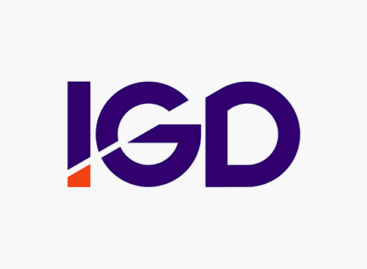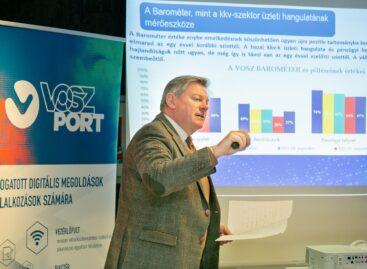Magazine: The colourful world of white goods
According to market research data, Hungary’s large household appliances (also called white goods) market keeps growing – we learned from Zsolt Belényesi, domestic sales division manager of Electrolux Lehel Kft. Government programmes to replace old refrigerators and washing machines had a positive effect on sales. Energy efficiency is increasingly important for consumers in deciding which product to buy, and product design is also more and more influential in purchasing decisions. When asked about trendy products, Mr Belényesi mentions kitchen robot Assistant, handheld vacuum Ergorapido and steam ovens. Pál Szabó, the head of Samsung’s home appliances division told our magazine that the home appliances market was growing by an annual 10-12 percent in the last few years. Home appliance design trends are changing rather fast as unusual shapes and colours catch consumers’ attention. Samsung came out with a refrigerator with a hidden handle in 2013 and it instantly became a trend setter. Price is still the number one factor in shopper decisions but energy efficiency is already the second most important decision-making factor. Gábor Papp, sales and marketing manager of Miele Kft. explained to us that the consumers of today are really conscious when it comes to buying household appliances. Those innovative solutions are also important to them which can help in doing certain things faster and more easily. From the company’s most popular products he mentioned the washing machine TwinDos and the current big hit, robotic vacuum cleaner Scout RX1. Mr Belényesi revealed that the digital revolution had its effect felt in the market of large and small household appliances too. At the end of last year there were 2.7 million smart homes in Europe and by 2019 there will be 29.7 million digital households on the continent. Electrolux sees the increased demand for devices connected with each other, therefore in product innovation the company focuses on digital solutions such as smart oven AEG ProCombi Plus Smart, which is equipped with a camera and with the help of an app users can follow and manage the cooking process on their smartphone. Mr Papp told that it is more and more important for Miele customers to be able to operate their home appliances using touchscreens similar to that in smartphones – or even through their smartphones. Mr Szabó added that the spreading of smart homes will reach Hungary sooner or later. Samsung already offers washing machines with smart functions in the Hungarian market, and the segment of robotic vacuum cleaners is developing rapidly. Electrolux wants retailer partners to be able to demonstrate the usefulness of the new solutions featured in the company’s products. The better retailers do this, the larger selection of brands and products Electrolux can supply them with. In the last three years Electrolux’s global brand communication concentrated on laundry care and gastronomy. The company uses a 360-degree marketing strategy and this includes a buying process which is a real experience for customers, plus the use of digital devices. Miele shapes its product assortment with the strengths of the given retail channel in mind. For instance products that require interior design work to install are available in design and kitchen studios, while washing machines and vacuum cleaners are sold in consumer electronics and online stores. Samsung provides retailers with the same selection of products, irrespective of the channel. The company also makes sure that the same product portfolio is made available both offline and online. In its marketing strategy Samsung first specifies the target group based on the most important product advantages, and in the next phase they create the communication platform that will be used throughout the product’s life cycle. Mr Belényesi sees a big difference between the product selections offered in Hungarian stores and in Western Europe. The main reason behind this is that some Hungarian households are only purchasing their first home appliance in certain product categories, while their Western European counterparts are buying the second generation of products in the same category. Mr Szabó agrees with him as regards the difference, adding that it also has to do with purchasing power. What in Hungary qualifies as an upper-category device is only medium category in Western Europe. Side-by-side refrigerators are a good example of this. Mr Papp opines that the difference between markets is becoming smaller. His company implements Europe-wide product launches, therefore the latest Miele products appear in Hungarian stores immediately. In his view Hungarian consumers are more open to new solutions than they used to be.
Related news
Related news
Waves in the company trend – the changing faces of liquidations and company formations
Even with decreasing terminations, decreasing numbers of companies in the…
Read more >IGD: Retail media and increased efficiency will be important in 2024
This article sets out to summarise the retail trend predictions…
Read more >Domestic businesses are planning cautiously but consciously – VOSZ Barometer business sentiment analysis – Q1 2024
Uncertainty is still strongly felt in the business mood of…
Read more >





